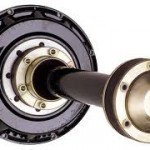Metabolomics is the systematic study of chemical process that involve metabolites which are the byproducts of metabolism in organisms. Typically, a metabolite is a small molecule. There are primary metabolites which are involved in growth, reproduction and development. There are also secondary metabolites that, while not involved directly in the processes primary metabolites participate in, but do possess an important ecological function. Examples of secondary metabolites are antibiotics and pigments. Metabolomics is an important process in understanding how the cell works because it can provide consistent information on the physiology Read More
How Magnets Work
A magnet is an object formed out of any type of material that can produce its own magnetic field. Such materials include hard magnets and soft magnets. Examples of hard magnets are neodymium magnets and refrigerator magnets which always remember the way in which they were magnetized.Examples of soft magnets are electromagnets, which can be switched on and off to change their magnetic characteristics. All magnets are ultimately magnetized by some kind of a motion of electric charge. Magnets become magnetic due to their atomic interactions with various outside forces, Read More
Laser
Laser is the abbreviation of the term "light amplification by stimulated emission of radiation." It is an apparatus that emits a special form of light. The emission of light by a laser is known as stimulated emission. The essential parts of a laser are a gain medium and an optical cavity. There should also be an external source of energy to be supplied to the gain medium. Gain medium is a material that has got the characteristics to amplify light. The gain medium in a laser can be a material Read More
Brain Computer Interface
A brain computer interface (BCI) is an external devices that communicate directly to the brain of humans or animals through neuron silicon interfaces. These external devices can either transmit or receive signals to and from the brain which can then be used to restore function or movement to sensory organs or limbs. Furthermore, these external devices can range from simple circuits to advanced silicon chips. As of today, brain computer interface devices have been successful in restoring damaged sight, movement and hearing. The success of these devices stems from the Read More
What Are Permanent Magnets?

A permanent magnet (ferromagnet) is a material that produces a magnetic field. Permanent magnets are made from ferromagnetic materials, such as iron, and are created when the material is placed inside of a magnetic field. When the magnetic field is removed, the object remains magnetized. Permanent magnets have a permanent magnetic field and do not turn on and off like electromagnets do. Permanent magnets are the oldest type and are still used for a wide variety of applications today. How Permanent Magnets Work Permanent magnetization of a material involves its Read More
Air Circulators
An air circulator is basically a fan. Although the term “air circulator” most often refers to an industrial fan that is used in a warehouse, factory, or office building, it can also refer to a regular household fan. Air circulators also refer to air conditioning units and other types of air cooling devices. They are designed to cool a room or area in very hot environments. For example, factories that have many people and machines often become hot very quickly. Likewise, homes can also become very hot due to so Read More
What is Cryonics?

Cryonics is the preservation of legally dead people or pets at extremely low temperatures (below 130ºC or 200ºF) in order to restore the person or animal to life in the future. Current law prohibits freezing someone in this manner while still alive, so the technique is conducted as close to the point of death as possible. The general idea behind cryonics is that since most diseases that cause death result from damage to the body’s tissues, cells, organs, and cellular components, the body should be curable in the future as Read More
How a Fuel Cell Works
A fuel cell is a device that produces electrical energy through chemical reaction. This energy conversion process is known as electro-chemical energy conversion. The simplest form of electrochemical device that we use in our day to day life is a battery cell. A fuel cell is different from a battery cell in so far as reactants are constantly supplied to a fuel cell making it an open system whereas a battery cell is a closed system that stores the reactants within it. A fuel cell works as long as fuel Read More
What is Magnesium Used For?
Magnesium is a chemical substance denoted by the symbol Mg. It forms part of the Group 2 of the periodic table, thus making it an alkaline earth metal. Its atomic number is 12 and it is considered to be the 8th most copious element found in the earth’s crust. In terms of the human body, it is the 11th most copious element found in it. Magnesium ions are extremely vital to all living cells, as they are instrumental in the control of biological compounds such as ATP (Adenosine Triphosphate), RNA Read More
Torsional Vibration

Solid mechanics defines torsion as the twisting of an object as a result of applied torque. Torsional vibration can be broadly described as the angular vibration of any object. It can be defined specifically as the periodic motion corresponding to a shaft, where the shaft is twisted about its axis, alternating from one direction to the other. Where does Torsional Vibration Occur? Torsional vibration is commonly a concern in large power transmission systems that incorporate shafts or couplings. In such environments, uncontrolled torsional vibration can cause transmission failure. An ideal Read More


Share on: